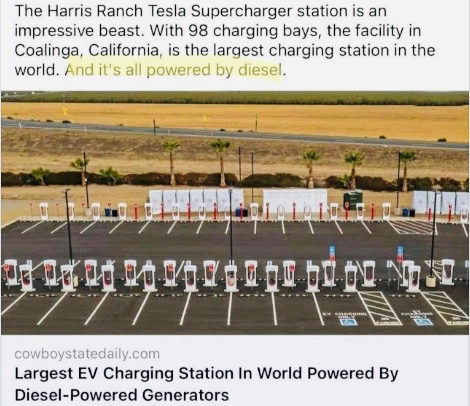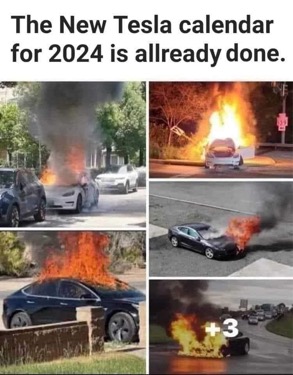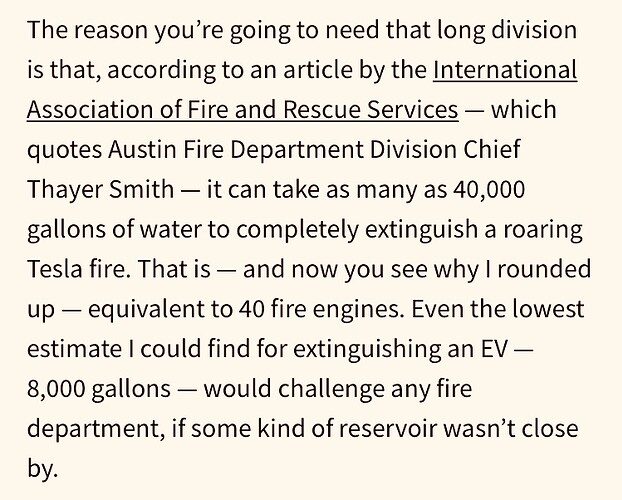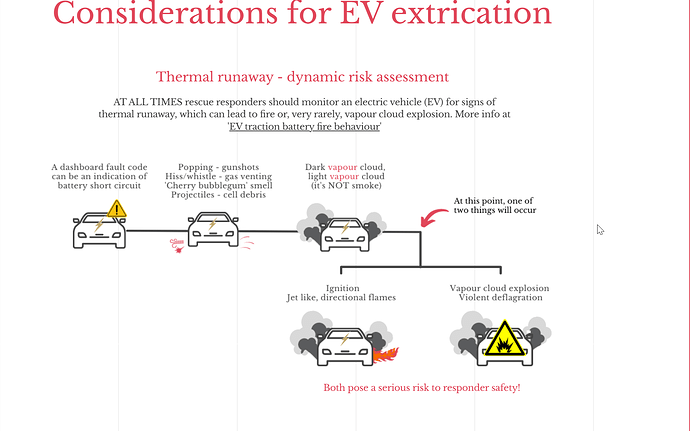I hope NIST and UL start certifying some of these devices coming to market. I finally had my first fire about 6 months ago. It was challenging, traffic collision, with fire, fatal occupant still in car. Yarded him out then took us 3 hours to put the car fire out. Luckily it was a sedan so we could use our grip hoist to tilt the car on its side and apply the water directly to the battery. Had it been a larger EV like the FedEx truck that delivers to my house there is no way our little grip hoist could have lifted it. We have an issue right now and I hope the auto industry who makes these things can come up with a nice solution and then have them pay for them and give each battalion at a fire dept. one of whatever they come up with. Until then industry is trying to solve it but to my knowledge there is not any sort of certifying body that says widget X actually works.
5yard debris box mounted on engine chassis, then fill with water 
Laura Kavanagh, FDNY Commissioner told reporters:
"In all of these fires, these lithium-ion fires, it is not a slow burn; there’s not a small amount of fire, it literally explodes. It’s a tremendous volume of fire as soon as it happens, and it’s very difficult to extinguish and so it’s particularly dangerous.”
…
All lithium-ion batteries use flammable materials, and incidents such as the one in the Bronx are likely the result of “thermal runaway,” a chain reaction which can lead to a fire or catastrophic explosion, according to Khoo.“This process can be triggered by a battery overheating, being punctured, or an electrical fault like a short circuit,” Khoo said. “In cases where fires occur spontaneously while charging, it is likely due to manufacturing defects.”
Lithium-ion Battery Fires are Happening More Often - Here’s How to Prevent Them - CNN - Batteries News
Lithium-ion batteries—used in everything from smart phones and laptops to electric scooters and cars—are catching fire on land and at sea. We talk with a former cargo ship captain about why these fires are so hard to put out and why ocean-going car carriers are at particular risk.
Lithium-ion battery fires in electric vehicles : The Indicator from Planet Money : NPR
Road rescuers globally are encountering more electric vehicles involved in collisions where the driver or passengers need extrication. While very low, the risk of electrocution from cutting into an EV is real. Isolating the high voltage traction battery in an EV de-energises the high voltage cables & components located around the vehicle, making it safer to work around. Unfortunately, there’s no standardisation across EV manufacturers on HOW to isolate the HV battery. So we took the opportunity at the recent EV Expo run by the @australianelectricvehiclea2616 in Canberra, to look at two ways. Two responder tools, the CUT LOOP & PULL FUSE are low voltage connections that isolate high voltage systems. We also talk about the MANUAL SERVICE DISCONNECT PLUG, but this should only be used by trained mechanics as it’s a direct connection to high voltage (in EVs, high voltage is over 60V & marked with orange conduit or stickers. We’ve been working with the Victorian State Emergency Service & other Australian rescue agencies to start building a set of draft considerations for rescue responders when dealing with an EV, which can be downloaded here:
This is for information and intel only. I do not recommend trying these things without instruction, training, supervision and backup.
Note the use of the term, “very rarely”, when addressing vapor cloud explosions. There is recent evidence that vapor cloud explosion risk might be higher than expected, with the caveat that a wider range of possible applications, devices and systems be considered by first responders; that OEM defects cannot be excluded from investigations, and that they are likely to experience other confounding factors; ambient temperatures, availability of water, risk of fire spread to receptive fuels, wind and smoke, etc.
Mandate all EV charging outdoors


That’s Priceless!!!
There’s enough material out there to bag on Tesla and the issues they have than to perpetuate a disproven meme. I do like the calendar idea though… 
I can’t verify the source, but this 1:38 video claims to capture a spontaneous ignition of an EV, the buildup of ‘smoke’ (it’s vapor) from under the car, then the vapor cloud explosion in a parking structure security camera from China.




